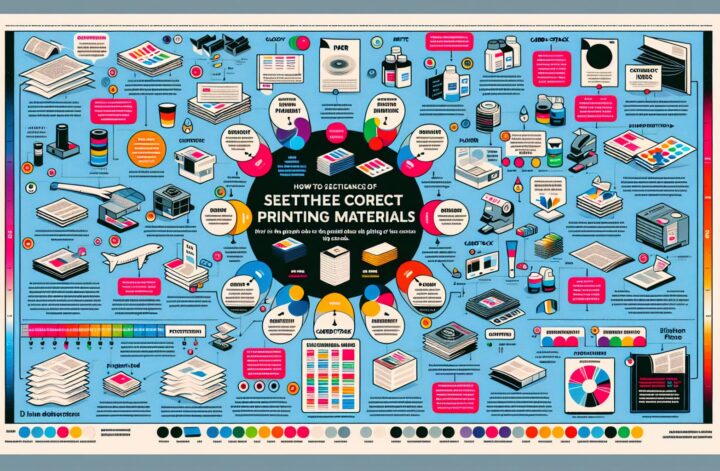Printing is an important aspect of our daily lives, whether it be for personal or professional purposes. With advancements in technology, there are now a wide range of printing materials available to suit various needs. In this guide, we will explore the different types of printing materials, their features, and their applications. So let’s dive in and discover the perfect printing material for your next project!
Introduction to Printing Materials
Printing materials are substances used to create physical prints of digital designs or documents. These materials can range from paper to plastics, metals, fabrics, and more. The choice of printing material depends on factors such as the desired outcome, durability, appearance, and budget.
Advancements in printing technologies have significantly expanded the possibilities of printing materials. With different properties and characteristics, these materials cater to various requirements across industries. Let’s take a closer look at some popular printing materials and their applications.
1. Paper
Paper is the most common and widely used printing material. It is available in various sizes, thicknesses, and finishes. From everyday copy paper to high-quality photo paper, there is a paper option for every need.
- Copy Paper: This type of paper is lightweight and commonly used for everyday printing tasks such as documents, letters, and notes.
- Cardstock: Cardstock is thicker and sturdier, making it ideal for business cards, invitations, and high-quality prints.
- Photo Paper: Designed specifically for printing photographs, photo paper comes in different finishes like glossy, matte, or satin, allowing for vibrant and long-lasting prints.
2. Plastics
Plastics have gained popularity in the printing industry due to their versatility and durability. They offer a wide range of options for both 2D and 3D printing.
- PETG: Polyethylene terephthalate glycol, commonly known as PETG, is a transparent and impact-resistant plastic. It is often used for 3D printing functional prototypes, signage, and display graphics.
- ABS: Acrylonitrile butadiene styrene (ABS) is a tough and rigid plastic suitable for 3D printing applications such as mechanical parts, toys, and automotive components.
- PVC: Polyvinyl chloride (PVC) is a versatile plastic known for its durability and weather resistance. It is widely used in signage, banners, and outdoor advertising materials.
3. Metals
Printing with metals has revolutionized industries such as aerospace, automotive, and jewelry. Metal printing allows for the creation of intricate designs and parts that were previously challenging to manufacture.
- Stainless Steel: It is commonly used for producing kitchenware, automotive parts, and industrial components.
- Aluminum: Aluminum offers a lightweight and corrosion-resistant printing material for applications like aircraft parts, architecture, and signage.
- Titanium: With its exceptional strength and durability, titanium is essential in industries like medical, aerospace, and defense for printing implants, aircraft components, and advanced machinery.
4. Fabrics and Textiles
Printing on fabrics and textiles has become increasingly popular in the fashion, interior design, and advertising industries. The ability to print detailed and vibrant designs on textiles opens up new avenues for creativity.
- Cotton: Cotton is a common fabric for printing t-shirts, apparel, and home textiles due to its breathability and versatility.
- Polyester: Known for its wrinkle resistance and quick-drying properties, polyester is widely used for outdoor banners, flags, and sportswear.
- Silk: Silk offers a luxurious and smooth surface for high-end fashion garments, scarves, and home decor items.
5. Specialty Materials
In addition to the more commonly used printing materials, there are also specialty materials that cater to specific needs and requirements.
- Magnetic Sheets: Magnetic sheets are flexible and magnetized, making them ideal for printing business cards, promotional items, and refrigerator magnets.
- Wood: Printing on wood has gained popularity in the field of interior design and personalized gifts, allowing for unique and rustic designs.
- Glass: Printing on glass offers a modern and sleek look for applications like signage, decorations, and architectural features.
Conclusion
Printing materials play a crucial role in achieving the desired outcome and quality of prints. Whether you need paper for everyday documents, plastics for 3D printing, metals for industrial applications, fabrics for fashion, or specialty materials for unique projects, there is a wide range of options to choose from.
Considering the specific requirements of your printing project, such as durability, appearance, and budget, is essential in selecting the most suitable material. With the continuous advancements in printing technologies, there will always be new and innovative materials emerging to explore. So, keep exploring, experimenting, and pushing the boundaries of what is possible with printing materials!

